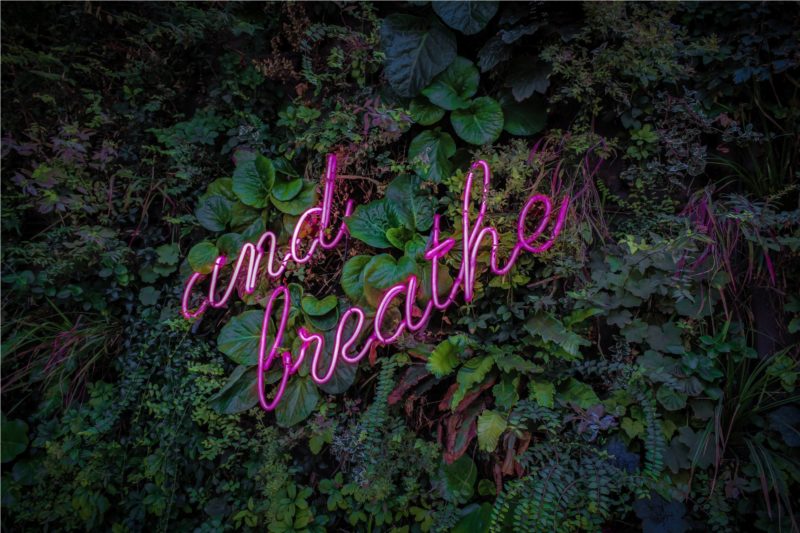Sometimes people experience ongoing low-level anxiety – a distress that seems to hang out continually as if it were an appendage. It can be like that constant whirring noise of a fan in the background that’s left on day and night.
 On the other hand, one can experience those sudden episodes of anxiety that seemingly jump up out of nowhere. They are quick, discrete, and can seem to have a life of their own. They’re different than the lingering anxiety in how they manifest but are just as miserable and unsettling. People often refer to this latter experience of anxiety as an “anxiety attack,” which really is a good way to label it since it can literally feel like an attack.
On the other hand, one can experience those sudden episodes of anxiety that seemingly jump up out of nowhere. They are quick, discrete, and can seem to have a life of their own. They’re different than the lingering anxiety in how they manifest but are just as miserable and unsettling. People often refer to this latter experience of anxiety as an “anxiety attack,” which really is a good way to label it since it can literally feel like an attack.
Webster’s New World Dictionary defines attack as “to begin acting upon harmfully—to make an assault; to undertake vigorously. But just as one can take defensive, helpful steps to take care of themselves if they’re having an asthma attack or they’re the subject of someone’s verbal attack, they can do the same with an anxiety attack.
Someone experiencing an asthma attack might use an inhaler to bring their body back to homeostasis, whereas someone on the receiving end of a verbal attack may set a boundary.
Three Tips for Calming Yourself During an Anxiety Attack
In this article, I will talk about helpful tips you can use if you find yourself having an anxiety attack because by no means do you have to be helpless against them. As Webster’s dictionary says, an attack can be “vigorous” but we can be vigorous in return.
Tip #1: Grounding
The first tip I want to talk about is grounding. Grounding can take different forms, but the key in each form is to shift your focus away from the anxiety – both the physical sensations that anxiety can produce and the thoughts that often accompany the anxiety; for instance, shifting your focus away from a nervous stomach ache or pounding heart and shifting your focus from all the ‘what-if’ thoughts or self-defeating thoughts such as, “I can’t deal with this.” When we keep our focus on the anxiety itself, we are feeding the anxiety and/or maintaining it. Grounding involves putting our focus on something else and using one of our five senses in the process.
 I think the best way to explain the grounding technique is to walk you through a few examples of how it could be employed in real-time. In the following example, Sally goes through a mental grounding exercise that employs sight in response to a sudden anxiety attack she experienced while seated in the waiting room of her doctor’s office.
I think the best way to explain the grounding technique is to walk you through a few examples of how it could be employed in real-time. In the following example, Sally goes through a mental grounding exercise that employs sight in response to a sudden anxiety attack she experienced while seated in the waiting room of her doctor’s office.
Wow! I am feeling really anxious. I don’t know where this came from, but I do know that I’m not going to partner with it. I’m going to use my grounding technique by identifying every single thing that I see in this office.
Okay . . . I see chairs in this waiting room. How many are there? One, two, three, four, five, six, seven, eight. There are eight chairs. What’s on the wall? I see a painting of flowers in a vase. There are carnations and daffodils in the vase. There are also two more paintings on the opposite wall.
Interesting . . . that wall also has a water stain in the upper left corner. There is a calendar on that wall, too. I see that the floor is made up of tiles. I am going to count every tile I see. One, two, three, four, five . . . .
Sally shifted her focus off of her anxiety and onto every visible thing that her eyes could take in. By doing so, Sally started to calm down. She “grounded” herself.
 Here is another example of grounding that makes use of focusing the mind on a particular topic. In this example, David relies on the use of grounding while getting an MRI – a medical test that requires him to have his head inside a machine for fifteen minutes in order to get images of his brain.
Here is another example of grounding that makes use of focusing the mind on a particular topic. In this example, David relies on the use of grounding while getting an MRI – a medical test that requires him to have his head inside a machine for fifteen minutes in order to get images of his brain.
Oh man! I can’t use my visual grounding technique in here as there is nothing to look at. I’m going to think of every single name that I can that starts with the letter “B” – Barbara, Ben, Betty, Bill, Brodie, Bertha, Becky, Bob, Brynne, Bojangles. Okay, now I am going to think of every television show or movie that I’ve ever watched that starts with the letter “B” – The Brady Bunch, Braveheart, Batman, Beverly Hills 90210 . . .
David was restricted in what he could use with regard to his five senses, but the technique he used was just as effective.
Tip #2: Breathing
When experiencing an anxiety attack, purposeful breathing can also help to bring relief. There are different types of breathing exercises that can be done to facilitate calmness, but I will be discussing one called “Breath Focus.” This exercise is relatively easy and can be done either lying down or in an upright position. Here are the steps:
- Take a deep, slow breath through your nose.
- Exhale slowly either through your nose or mouth (whichever way feels good to you).
- Breathe in this way for several minutes, all the while paying attention to the rise and fall of your belly.
- As you are breathing in, imagine that you are breathing in peace. As you exhale, imagine that you are releasing angst and distress.
- Don’t worry if you get distracted – it happens. Just notice that you got distracted and then shift your focus back to your breathing.
Merely focusing on your breath may seem too simple to make a difference with anxiety, but don’t be too quick to dismiss it. Breath is a definite life force and how we use it can affect our life experience.
Tip #3: Visualization
 The last tip I want to briefly share with you is visualization. This is basically picturing yourself in a safe, relaxing place. We can go anywhere in our minds and that includes places that bring us comfort, are soothing, and instill a sense of peace in us. For one person, it might be picturing themselves on a white sandy beach with turquoise water lapping up on the shore.
The last tip I want to briefly share with you is visualization. This is basically picturing yourself in a safe, relaxing place. We can go anywhere in our minds and that includes places that bring us comfort, are soothing, and instill a sense of peace in us. For one person, it might be picturing themselves on a white sandy beach with turquoise water lapping up on the shore.
For someone else it might be that childhood memory of sitting at Grandma’s kitchen table watching her bake cookies. The sky is the limit when it comes to visualizing safe, calming settings.
If none of the tips given in this article prove helpful to you for your anxiety, you may want to consider seeing a professional counselor. Counselors are trained to help you understand the source of your anxiety and how to either resolve it or manage it. Adding a counselor to the equation may be the added element you need.
“Breathe Deep”, Courtesy of Darius Bashar, Unsplash.com, CC0 License; “…and breathe”, Courtesy of Victor Garcia, Unsplash.com, CC0 License; “Ascend”, Courtesy of Saffu, Unsplash.com, CC0 License; “Tense”, Courtesy of Kyle Glenn, Unsplash.com, CC0 License

